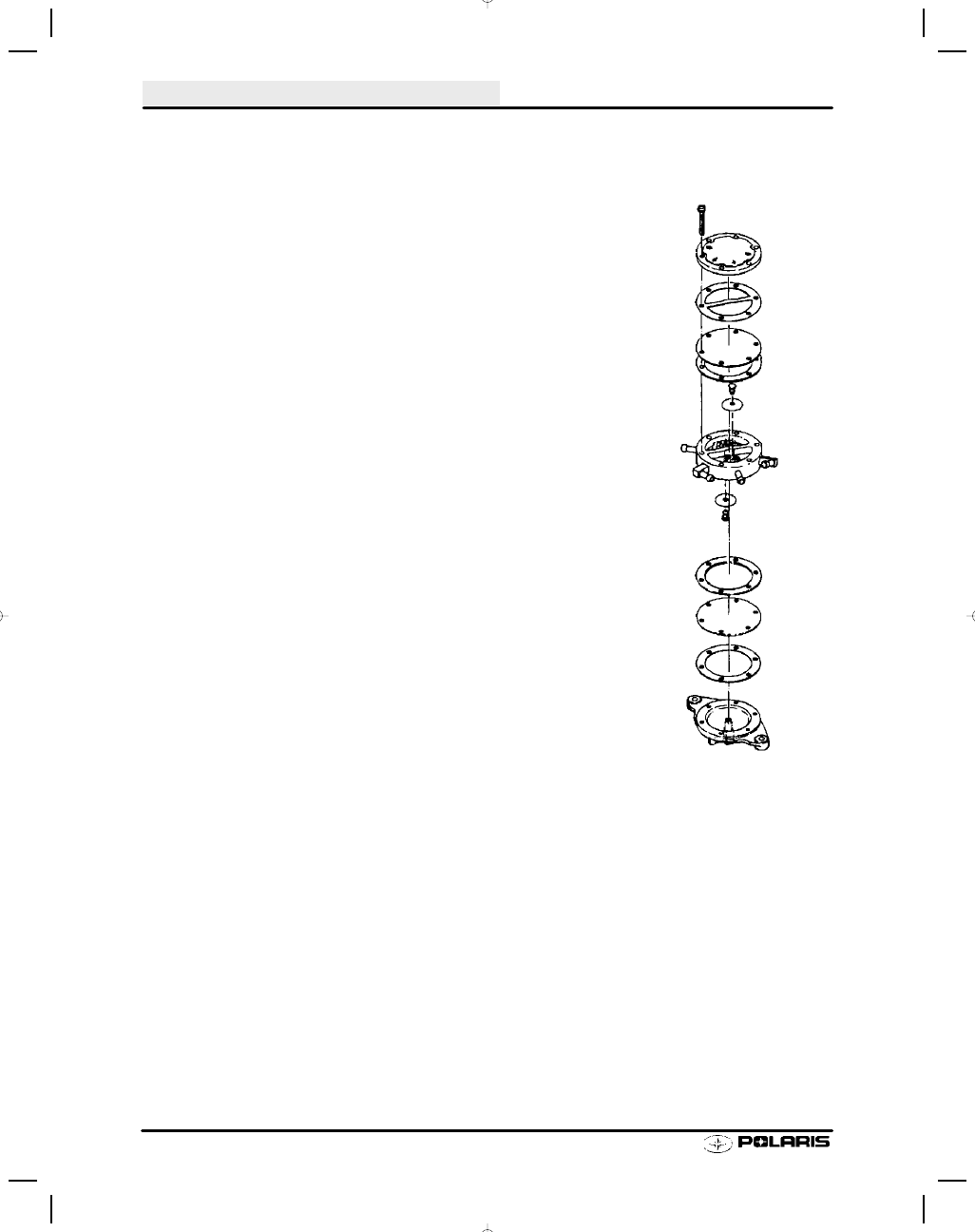Snowmobile Polaris PRO X (2003 year). Instruction - part 32

CARBURETION
3.30
Fuel Pump - Operation
The fuel pumps on all Polaris engines are basically the same.
The differences are in the size and location of the pumps.
Pumps may be mounted on the crankcase or on the machine
by using an impulse hose.
In the two cycle engine, the pressure in the crankcase changes
with the up and down stroke of the piston. The amplitudes of
pressure vary according to the RPM and degree of throttle
opening. Whether idling or at full throttle, the pressure built up
in the crankcase has enough amplitude to operate the pump.
When the piston is on the upstroke, crankcase pressure in that
cylinder becomes less positive. The diaphragm in the fuel pump
moves toward the engine, causing a negative pressure or suc-
tion in the pump chamber. This causes the inlet valve from the
fuel supply to open and permits fuel to enter the chamber. This
same suction causes the outlet valve (to the carburetor) to close
so that fuel cannot return form the carburetor.
When the piston begins its downward stroke, the pressure from
the crankcase becomes positive, causing the fuel pump dia-
phragm to move in the opposite direction and reversing the
pressure in the fuel pump chamber. This causes the inlet valve
in the pump to close and the outlet valve to open, filling the float
bowl in the carburetor. When the float level in the carburetor
reaches its standard level, the needle valve will close, prevent-
ing more fuel from entering the carburetor, even though the fuel
pump continues to try to provide the carburetor with fuel.
Maintenance
The impulse operated diaphragm fuel pump does not require any specific scheduled maintenance. However, the
following procedures should be observed.
Operation:
S
The pump may be checked for operation by removing the fuel supply line from the
carburetor and placing it into a container. With the engine idling at approximately
2000 RPM, a steady flow of fuel should be visible.
Cleaning:
S
The pump and impulse line must be disassembled and cleaned of foreign material in
the event of piston or other internal engine part failures which produce fragments.
Inspection:
S
The diaphragms and check valves must be carefully examined for cracks, tears,
holes, or other damage. If in doubt as to the condition of any internal parts, replace
all diaphragms, check valves, and gaskets.